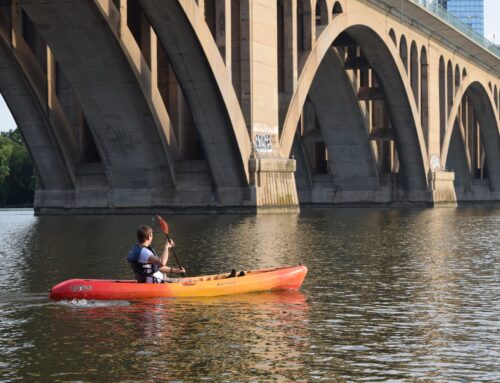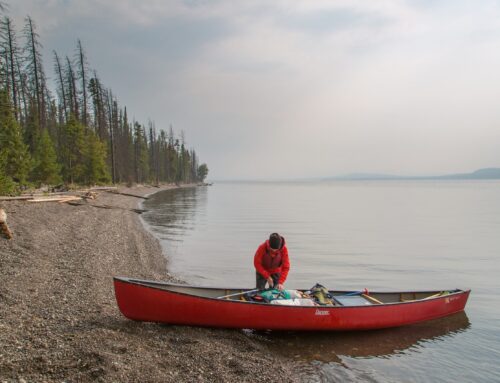Updated October 27, 2022
One of the best parts about the ski world is that it is an international phenomenon. Two skiers from opposite sides of the world would probably have more to talk about than two lawyers from different countries, and that says something about the sport. It’s a great common denominator that connects a variety of people and lifestyles from all over. This has all translated into ski slang that has roots from different ski cultures across the world.
But if you’re new to skiing you might be wondering what they’re actually saying. From terrain and equipment to conditions and ski styles, there’s probably some kind of ski jargon to describe it. If you want to dive deeper into the world of skiing and better understand this sport, then learning some common ski slang and their translations will be incredibly helpful.
Going Skiing? Check out these awesome ski resorts for your next trip:
- 15 Top-Notch Places for Snowboarding & Skiing Near Denver
- 12 Amazing Places to Go Skiing Near Los Angeles & Southern California
- 14 Amazing Places to Go Snowboarding & Skiing Near Chicago
Terrain Ski Terms
- Moguls – Bumps that are formed on runs from continuous turning and weaving through them.
- Groomers – Runs that are groomed by a snow cat machine.
- Alpenglow – A natural phenomenon found in high altitude mountains. A reddish light radiating from mountain peaks and ridge lines near sunset or sunrise.
- Exposed – If terrain is exposed it means it’s a very dangerous, no-fall area, such as above cliffs or in a chute.
- Fall line – The most direct route down the mountain. It is sometimes described as the route a ball would take if rolled down.
- Backcountry – Any ski area that is unmarked or unpatrolled. Can be inside or outside of a ski resort.
- Couloir – A steep, narrow line that could be in a gully or between rock formations.
- Cornice – The build-up of snow on a ridge line, peak, or cliff that is usually formed by the wind.
- Kicker – A jump with a steep take off that launches skiers into the air. It could be a man made jump or naturally formed.
- Pillows – Cliffs or rock formations in succession with a lot of snow on them. This can also be referred to as a pillow line because the snow on the rocks look like pillows.
Ski Slang – Conditions
- Hard-packed – This refers to snow that is densely packed down from heavy skiing, wind or melting/freezing.
- Chunder – Variable, inconsistent, undesirable snow.
- Mashed potatoes – Super soft, almost soupy snow, that forms from constant melting when the weather is warming up.
- Corn – Similar to mashed potatoes, corn refers to snow that has been constantly melting during the day and freezing at night. This turns the surface snow into tiny balls of ice that are hard in the morning, but by the time the afternoon sun warms it up, it is soft and carveable snow. Corn is more desirable than mashed potatoes for spring skiing.
- Crust – This term refers to a hard top layer that forms on softer snow from freezing temperatures, wind, or rain.
- Dust on crust – Snow conditions that refer to a thin layer of snow on crust from a light snowfall or windblown snow. Dust on crust can look like good conditions until you’re actually skiing it.
- Powder – Light, fluffy, freshly fallen snow that every snowsport enthusiast dreams of.
- Blower – Also a “blower powder day.” This means the powder is so deep it’s blowing into your face and over your body as you make turns.
- Dump – When it snows a ton. Ex: “Bro it’s dumping out there. We must have 2 feet already!”
- Tracked out – Runs or landings that are tracked out means they have been skied on a lot, and the good snow is mostly gone.
- Bluebird – A sunny day with no clouds, often coming after a storm. They are some of the most sought after days for a skier.
General Ski Terms
- Yard sale – When someone takes a big fall and loses a bunch of their gear all over the mountain.
- Shredding – A term of endearment that means someone is skiing well.
- Jerry – A ski slang term to describe someone who is out of their element on the ski hill. Ex: “Dude that guy has his helmet on backwards. What a jerry!”
- Après – From the French word that means after. It usually means grabbing some drinks after a ski day, but it could refer to any activity in the lodge or village post-skiing.
- Catching an edge – A sometimes catastrophic event when your ski edge digs into the snow while your other ski keeps going and knocks you off balance.
- Carving – When you’re turning and the edge of your ski is initiated in the snow so that they follow the path of the ski edge across the mountain.
- Figure 11 – When a skier goes straight down a run with no turns, and you can see the tracks of their skis representing an “11.”
- Fresh tracks – Skiing a run or area that no one else has yet.
- Two minus one – A superstitious term that refers to the last run of the day. Some skiers believe saying “one more” is bad luck. Ex: “I think I’m gonna two minus one. I’m feeling pretty tired.”
- Looker’s left vs skier’s left – Looker’s left refers to the left side of the hill when looking up at it, and skier’s left refers to the left side of the hill when looking down it. This is the same for looker’s right and skier’s right as well.
- Death before download – When one would take death trying to ski down, rather than riding the chairlift down.
- Cat track – A wide lane cut through the snow by a snow cat machine. It’s usually the easiest way down or it connects different areas across the mountain.
- Traverse – To cut horizontally across the mountain to get to a different area. This could also be referring to a long, flat cat track.
- Jib- The action of skiing on something that is not snow. It could be grinding, sliding, hitting or bonking a park feature, tree, log or any non-snow thing.
- To bomb a run – The act of going straight down a run at top speeds.
- Chatter – When your skis flop up and down unnaturally. This usually occurs on hard snow or when you’re skiing softer skis.
- Line – A general term for a path down the mountain.
- Stomp – To land a jump, cliff or drop in a clean and stylish manner.
- Snow bunny – An attractive skier/snowboarder that is usually there for the Instagram posts and the après.
- Switch – The act of skiing backwards.
- White out – Stormy conditions where you cannot see very far out due to wind and snow.
Ski Slang – Areas
Not only does skiing as a whole have its own slang, but certain areas do as well. For example, “Sierra cement” is the iconically hard snow in the Sierra Nevada Mountains, and “The Kootenay Sea” is the sea of clouds that rolls into the valleys of the Kootenay Mountains in British Columbia.






